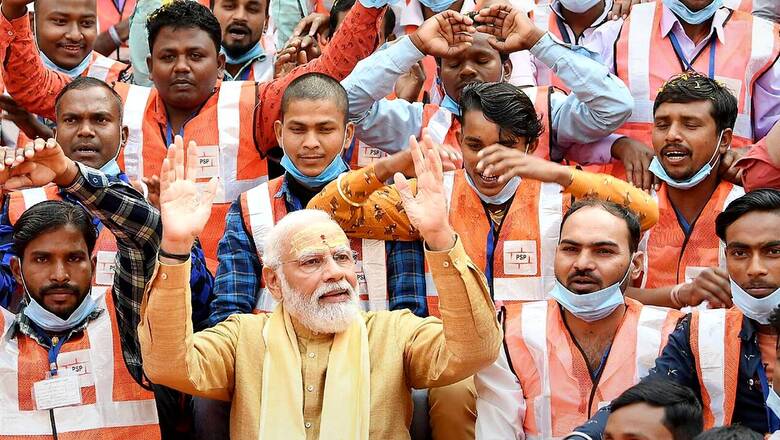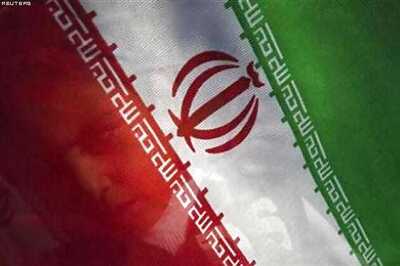
views
The Hindu-Hindutva debate has been stoked a few times in the recent past by the Congress party and those associated with its wider ecosystem. Rahul Gandhi in his most recent exposition said while Hindus stab from the front, Hindutva stabs in the back and that is the primary difference between the two.
Before getting into the intricacies of the debate, which suggests that while Hindu stabber is good but Hindutva stabber is bad, consider the following 10 realities of non-Hindutva universe, or the Nehruvian universe.
First, every religion is free to run their own religious institutions as they deem fit, except Hindus. For the religious institutions of Hindus are administered by the state, including partaking of money that is offered by the devotees.
Second, the Right to Education (RTE) Act came with a lofty ideal—all children below the age of 14 years must get guaranteed education and that too free in case they are unable to afford it. Therefore, even privately run institutions must reserve 25 per cent of their seats for such free education under RTE. Surely, such a noble cause would be religion agnostic? But the non-Hindutva activists had other ideas. The Supreme Court concurred. Non-Hindu run schools, even when government-aided, were kept outside the purview of RTE. Only the privately run, even unaided Hindu run schools had to take the burden of the entire country!
Third, laws relating to women—from inheritance to divorce and from rights in a marriage to alimony—have all been progressively amended, changed and reformulated to keep in tune with the modern reality. Hindu women, for example, are now entitled to inherit 50 per cent of their ancestral property, even after marriage. Why should such progressive laws towards gender justice discriminate among women basis their religion? But the non-Hindutva worldview says it must. All the advances in laws relating to women’s rights, since Independence, had only been about Hindu women. Muslim women, in particular, had to suffer under the medieval customs. Banning something as demeaning as instant Triple Talaq faced stiff resistance from non-Hindutva forces. Even now, Nikah Halala enjoys supports from the non-Hindutva forces who are arguing for its continuance in the Supreme Court.
Fourth, consider St. Stephen’s College in Delhi, funded to almost 90 per cent of its requirement by the taxpayers through the UGC. And yet, 50 per cent of the seats in the college are reserved for only Christians. Aligarh Muslim University has steadfastly refused to implement the SC/ST reservation policy of government of India, unlike say Banaras Hindu University (BHU), which as a central university implements it. There is even a Supreme Court judgment (Pramati Judgment 2014) which backs this position. “In other words, the minority character of the minority educational institutions referred to in clause (1) of Article 30 of the Constitution, whether aided or unaided, may be affected by admissions of socially and educationally backward classes of citizens or the Scheduled Castes and the Scheduled Tribes and it is for this reason that minority institutions, aided or unaided, are kept outside the enabling power of the State under clause (5) of Article 15 with a view to protect the minority institutions from a law made by the majority.” Take aid from the majority taxpayers but refuse to implement the provisions that help the most vulnerable among the same majority. That is the non-Hindutva worldview.
Fifth, medieval barbarians such as Aurangzeb and Tipu Sultan were lionized as icons of a plural society while their record on genocide and destruction of temples was conveniently brushed aside. Somnath—temple demolished. Ayodhya—temple demolished. Mathura—mosque built by demolishing a still standing temple. Kashi—mosque established on the walls of a clearly visible temple. The most scared places of Hindus all bore testimony to the pillage and plunder by invaders and terrorists. And yet, the victims, demanding justice, became the villains for stoking communal disharmony post-Independence while the aggressors became icons of a fictitious medieval golden age.
Sixth, a Panini is recognized the world over as the world’s first grammarian. Shushrut is celebrated in as far away lands as Scotland and New Zealand as the father of surgery. Yet in India, such brilliant innovators found no mention in school texts, while those who learned or mentioned them or similar other historical Indian achievements through self-learning were lampooned as believers in mythology.
Seventh, consider a question asked by an anchor of an online website to the architect of Kashi Vishwanath Corridor. The dingy lanes of Kashi, sewer-filled lines along the houses leading up to the temple, the narrow lanes, the filth along the ghats—all had acquired a character so why change it, she asked, and build a clean, aesthetic and devotee-friendly Dham around the Kashi Vishwanath Temple? How could Hindus, caricatured as defeated people, and wallowing in poverty and filth, even dream of an expansive Dham in their holiest city?
Eighth, in an ordinary sense, what should be the vehicle of political parties in a democracy to win elections? To unite maximum number of people on their development agenda, right? Except that India had one problem post-Independence which needed resolution. The leader had to be only from one non-Hindutva family, in each generation, while others could at best hope to get crumbs. Democracy was fine as long as it only returned one dynasty. How could this ever be achieved? Simple. The non-Hindutva dynasty must necessarily divide people in order to rule over them. For united people can rise together and ask for equality of opportunity.
Despite proclamations to the contrary, all the policies promulgated by the dynasty were designed to keep people divided in their ghettos of caste, religion, region and race. Divided people can be threatened. Greater the division, greater the fear in each sub-group. The dynasty can then morph itself as the protector of each sub-group. Sometimes, a more sophisticated version of this game was played. Hindus must be divided in smaller and smaller castes and groups, each played against the other with vitriol injected into their social fabric, while non-Hindus, primarily, Muslims, were to be persuaded to vote as one block else their religion would be in danger. So, what if such bitterly opposed people could never think of themselves as Indians first? At least the non-Hindutva dynasty’s future was secure, even if India continued to remain a third world country.
Ninth, for the non-Hindutva dynasty, stifling India’s economic progress was a necessary condition for it to remain in power without challenge. It is not accidental that socialism became a constitutional mandate under Indira Gandhi and not under Ambedkar’s original draft. The very soul of capitalism is competition. Different ideas compete and the best ideas win. From business to politics. It would be impossible to sustain an economic capitalistic, free market model but not a political one. There is one more reason why socialism works best for dynasty—it is because of the very effective way in which socialism keeps everyone equally poor as opposed to distributed levels of prosperity in capitalistic model.
Free enterprise in a capitalistic economy enables people to chart their own destiny, prosper and become rich, thereby moving up the social value chain. But if they move up the value chain, they would progressively aspire for “better”—better education, better healthcare, better infrastructure and so on. If this happens, then people might start voting for the candidate whose ideas for ensuring that “better” are more appealing than the dynasty. Socialism ensures that most of the economic opportunities are hoarded by the state or cronies, thus ordinary people never move up the value chain, remain always bound in poverty and destitution, and each time an election comes, some new sop can be promised, the dream of which can make the poor and destitute continue to vote for the ‘mai-baap’ dynasty. None of these schemes designed by the Congress system were meant make the poor prosper—they were intended to keep people entrapped in their poverty and thus remain easy catchment for the dynasty.
Tenth, and perhaps the most important, was the mental conditioning of the people in a newly independent nation. The Britishers, under the plan developed by Macaulay, designed a system which drilled an inferiority complex into Indians. For only mentally inferior, but numbering into hundreds of millions, could be ruled by a few thousands without major challenge. But post-Independence, instead of dismantling this obscenity, the new elite also adopted the policy and indeed promoted it with new vigor. It is this inferiority complex—that Indians, primarily Hindus, are not good enough to achieve anything of world standard, that became the guiding philosophy for decades.
A dam inaugurated in 1950s by Nehru was completed sixty years later under Modi. A water canal projected launched in 1970s was completed in 2021 under Modi. Despite bank nationalization by Indira Gandhi in 1971, it took a Modi and Jan Dhan, some 45 years later, for bank accounts to reach the poor. Vaccines launched in the West in 1950s would reach India 50 years later. Terrorists routinely murdered innocent Indians and yet all that was done in response was more talks with a terrorism-sponsoring nation. Why would people tolerate such misgovernance and not rise up in revolt? For it was drilled in them that they are inferior, with no history to be proud of, so they better be satisfied with what they are getting. The elites, most of them collaborators during the Briskish rule, became the propagators and defenders of this Idea of India, all the while living on taxpayers money.
What does Hindutva stand for in contrast to the non-Hindutva Idea of India? Simple. First, Hindutva does not ask that non-Hindus not be allowed to run their religious places, but that Hindus should have the same equal freedom.
Second, Hindutva does not ask that children not be given the right to education but that exclusive burden should not fall on just Hindu-run schools for all children. Either no privately run school should bear the burden or all privately run schools bear it.
Third, Hindutva does not demand that progressive laws not be made to empower women; in fact, it vehemently champions the idea since that is its civilizational legacy. Hindutva merely asks for uniform civil laws for all women and not leave some at the mercy of medieval practices.
Fourth, Hindutva asks that state-funded institutions must not discriminate in student admissions basis their religion and must implement constitutionally mandated reservation laws.
Fifth, Hindutva does not demand that history be changed. On the contrary, it asks that history not be sanitized to present barbarians as benign rulers, but rather true history be taught and that grave civilizational injustices of invaders not become a rallying point for present generation. For reconciliation to happen, first justice must be served.
Sixth, Hindutva does not demand that some fictitious account be taught as history but equally that India’s civilizational achievements before 6th century A.D. not be brushed aside on the altar of secularism and appeasement.
Seventh, Hindutva does not demand that non-Hindutva believers suddenly mend their ways but simply that they stop projecting their own defeatist, colonized mindset on the majority of India which is young, dynamic, equal to the best in the world and believes it is now their time.
Eighth, Hindutva does not believe in dividing the people of India into castes and sub-castes but asserts that they must be united under a broader ideological plane. Hindutva believes that it is not the divine right of one family to eternally rule over India, along with their retainers, but that in a democratic India everyone has equal chance to lead the country. Hindutva unites, non-Hindutva divides.
Ninth, Hindutva does not believe in stifling individual creativity and economic activity but rather stresses that each person must be empowered and given the freedom to chose her own destiny. Hindutva is not a believer in a large, overbearing state hoarding all economic activity, but argues for a small, but effective state while giving the people the full economic and social freedom.
Tenth, and most importantly, Hindutva believes in the power of every Indian, especially the ‘can-do’ young generation, as Prime Minister Modi characterized this confident, full of self-belief generation. It is this belief that has enabled India to set world standards from startups to vaccines and from delivering large projects before time to setting world standards in welfare delivery on the one hand to creating the world’s largest digital payments ecosystem on the other. It is this self-belief that enables India to inflict punishment deep inside enemy territory post a terrorist attack.
In essence, Hindutva has also evolved with time and so have the forces aligned against India in general and Hindus in particular. Hindutva in the original conception of Savarkar was a political response to centuries of frittering away of India’s civilizational genius. It worked. Within one generation, it reversed centuries of fragmentation and provided an institutional and conceptual framework to battle the proselyting religions that sought to undermine it.
Decades later, Hindutva evolved to also battle the degenerative Nehruvian secularism, which at its core is a project to subjugate the Hindu mind for the larger goal of maintaining an oligarchic rule.
In the modern context, Hindutva is about fulfilling India’s destiny in the 21st century and beyond. Hindutva, in its latest conception, is an economic, social and political reformist movement that is poised to unleash decades of growth and prosperity.
So, to return to the debate on Hindu vs Hindutva, the crux of the issue is really this. Hindutva is that armour of Hindus, which after being worn has made them realize what all is possible if they are united and just let free to chart their own destiny. Once eyes opened, how do the non-Hindutva believers propose that they will convince the Hindus to shut their eyes again?
The writer is CEO of Bluekraft Foundation. The views expressed in this article are those of the author and do not represent the stand of this publication.
Read all the Latest Opinions here
















Comments
0 comment